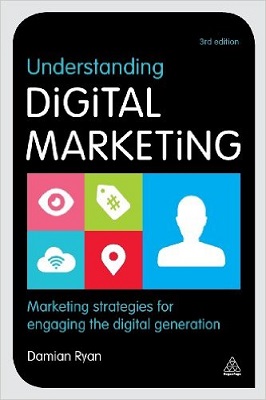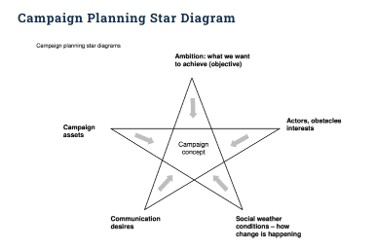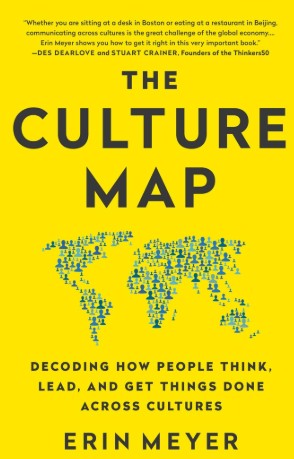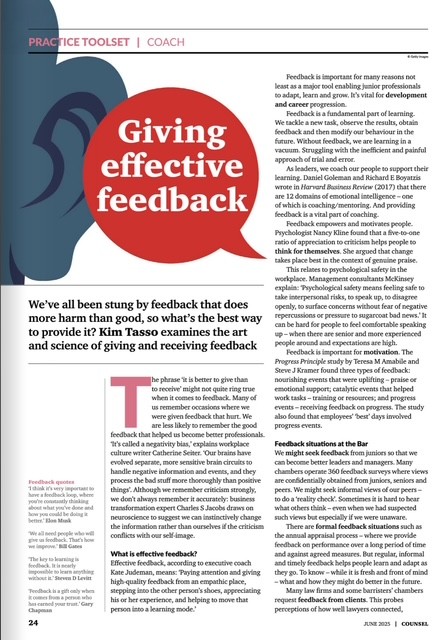
I’ve just submitted a review of this book to Professional Marketing magazine – http://www.pmforum.co.uk/magazine/ which will be published in early 2016.
I reviewed the original version of “Understanding digital marketing” in June 2011 (see http://kimtasso.com/book-review-understanding-digital-marketing-marketing-strategies-for-engaging-the-digital-generation-damian-ryan-and-calvin-jones/). This third edition, written at the start of 2014 and published in 2015, is a 100 pages heavier and has several new sections. I still believe it is one of the best books to provide a comprehensive overview of all things digital.
There is a completely new section on mobile marketing (the advent of two and three screen marketing) and also one on content marketing. Interestingly, the other addition is a section on buy-in – convincing your boss to invest in digital marketing.
Digital marketing strategy
The book has a gentle start with the usual background about the birth of the Internet, the startling statistics (mostly from the US) on the growth of digital channels and the need for a digital marketing strategy offering simple (possibly simplistic) steps to guide you through the process.
Web site development
Chapter three (Build you channel) focuses on responsive web site design including usability and accessibility. It moves elegantly from the technical mechanics of hosting and developing a web site to pragmatic advice on writing effective blog content. There’s a nice piece too on the top 12 web designs mistakes to avoid.
Measuring digital marketing
Chapter four (Is it working?) concentrates on measurement of owned (web metrics), paid-for and earned media. There is some technical depth in the log files vs page tagging section although cookies are skimmed over. After a nod to testing, there’s some good stuff on attribution modelling, GRP (Gross Rating Points), 3MS (Making Measurement Make Sense) for how interactive advertising is measured and KPIs. The section on the need for trust will resonate with PSFs.
Search engine marketing
Search (demoted from “the holy grail of online marketing in the advent of social media) is the focus of chapter five (Are customers finding you?). Reassuringly, the author writes “there is only one real tactic that most SEOs see as sustainable long term – build relevance to your site and focus on providing a resource for your customers”. He acknowledges that links are second to content in importance though. It’s a technical but interesting read – covering keywords, HTML, tags, bots and spiders. Paid (PPC), universal and social search are also addressed. There are some interesting facts:
- In 2013, US businesses spent $20.6 billion on search marketing (Winterberry Group)
- 70-80% users ignore paid ads on any given search
- 75% of users never scroll past first page of search results
- Companies that blog have 434% more indexed pages
- SEO leads have a 14.6% close rate (outbound leads have a 1.7% close rate)
- 18% of organic clicks go to the #1 position, 10% to the #2 position and 7% to #3 position
Social media
Although the chapter six on “Understanding social media” is much improved, it still feels a little lightweight. It starts with the need to listen and then summarises the different forms of social media (and the benefits of each to marketers) with developments up to 2013. It then addresses social media dashboards and blogs. There’s solid advice in the section on rules of engagement and collective intelligence.
Email marketing
The challenges of CRM databases are skipped over in the email marketing section which covers design, testing, campaigns and measurement well. There are some interesting factoids: consumer email marketing programmes record an average ROI of 114%, the average click-through rate is below 5% and 64% of businesses integrate their e-mail marketing and social media marketing.
Mobile marketing
The new chapter on mobile marketing starts with the startling statistic that by 2018 application to person (A2P) messaging traffic will reach 2.19 trillion messages and the statement “the steady rise of mobile has become the main event in the digital marketing arena over recent years”. The mobile user experience is considered along with check-in systems and mobile gaming (“video accounted for 31% of mobile data traffic in 2012” and “41% of mobile peak-hour traffic is due to real-time entertainment).
The section on mobile applications (apps) is useful with summary tips on building a successful app. The author suggests you search for your own information on a range of topics including QR, AR, SMS and mobile mapping.
Performance marketing (affiliate marketing)
Although incredibly detailed, I doubt this chapter on on-line strategic partnerships (advertising and sponsorship) will have much value to those in the professions. Although, at a stretch, you could see it being relevant for referrer management programmes in the future although generally these are based on relationships in real life.
Understanding online public relations
This remains a favourite chapter and opens with “digital silence is not an option for your business” and the increasing trend towards inbound pull rather than a push economy. There’s a nod to the principles of traditional PR and sound advice on crisis management before moving onto content marketing and social media and their role in reputation management. There’s also a great A-Z of online PR and ORM.
There are some great stats on Twitter:
- The majority of retweets are for tweets that contain links
- Engagement is 17% higher for tweets with less than 100 characters
- Engagement is 200% higher for tweets with image links
Content management
This is a valuable new chapter covering skills, content strategy, content creation and content production before looking at content promotion through things such as blogger outreach. But it still feels too short although the subject is touched on in various other parts of the book.
Convincing your boss to invest in digital marketing
Another new chapter but most people in the professions will be experienced in achieving buy-in from senior management and fee-earners. Although I liked the matrix on decision making and the 6S framework for internal proposals (Synopsis, Scene setting, Story, Sums, Steps, Surprise!)
What’s next?
There are 10 predictions for the future.
While the book is focused on consumer marketing, the knowledge is just as valuable to the B2B community. There’s a glossary to help you navigate all the jargon. Perhaps because it covers such as astonishing range of topics, it does feel a bit light in some areas. However, it does at least cover all the main areas in digital marketing that you need to know about and signposts more in-depth material through numerous links.
Throughout the book there are interesting and detailed case studies highlighting key points including: Alpharooms (online travel), Harley Davidson, Hg2 (travel guides), The Entertainer, Bennets (Bike insurance), Help for Heroes, Accor Hotels, Kiip, Dubizzle.com, Number One Shoes, Royal Mail Gold Postboxes, Tesco, Bristol-Myers Squibb, NatWest, East Coast Main Line, Littlewoods, Makino and UEFA Europea League
Key quotes:
- “The key change, however, is my realisation of just how fast the digital marketing world is evolving, and my fundamental belief that no one person can claim to be an expert across all disciplines”
- “It heralds the single most disruptive development in the history of marketing”
- “Digital marketing isn’t about technology at all, it’s about people”
- “Segmentation is fundamental to ensuring that your e-mail campaign is targeting the most appropriate audience”
- “Show and tell is dead, welcome to the world of ‘utility and entertainment’”
- “Google’s own study into how business-to-business (B2B) companies are researched found that more than half (57%) of buying decisions were taken before a face-to-face meeting occurred”
- “In a November 2013 interview with Adweek, WPP CEO Martin Sorrell explained how digital now accounts for 35% of all WPP business worldwide”.
Chapter list:
- So you want to go digital?
- @first…think!
- Then build your channel
- Is it working?
- Are customers finding you?
- Understanding social media
- Understanding e-mail marketing
- Understanding mobile marketing
- Understanding performance marketing
- Understanding online public relations
- Understanding content marketing
- Convincing your boss to invest in digital marketing
- What’s next?









